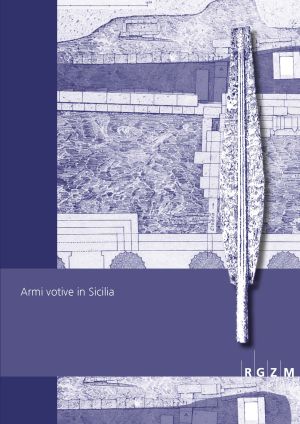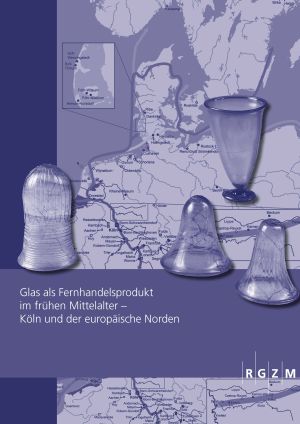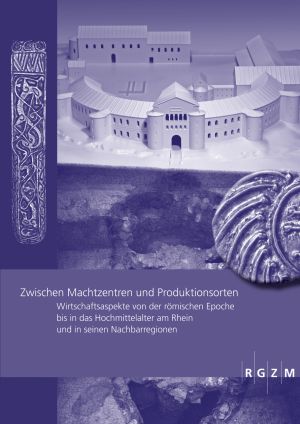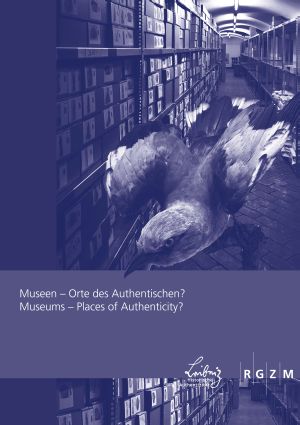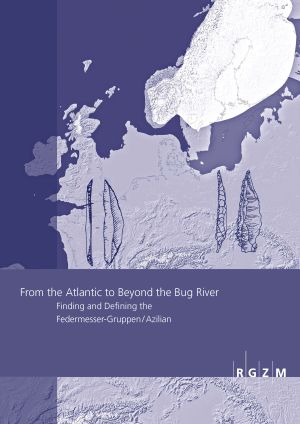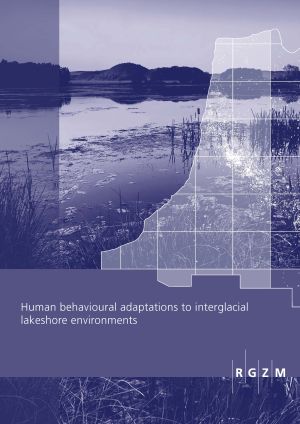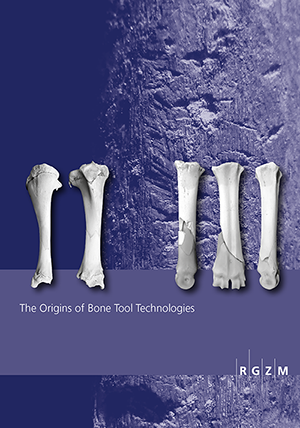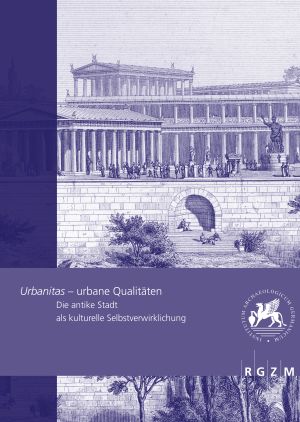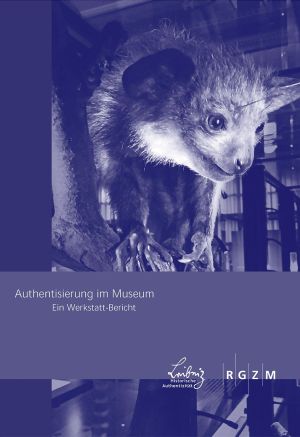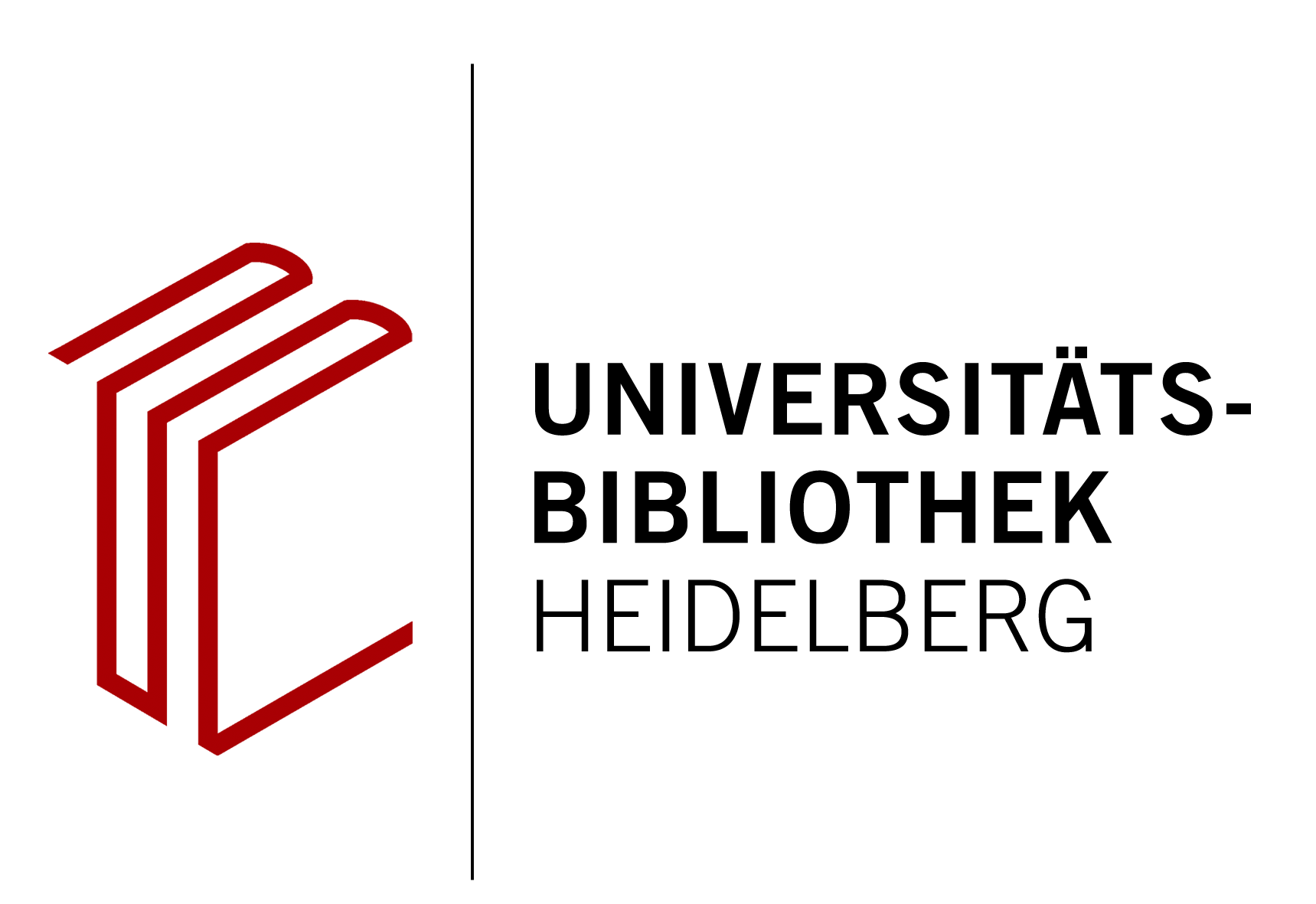RGZM – Tagungen
In den Bänden dieser Reihe werden aktuelle Beiträge von wissenschaftlichen Tagungen oder Workshops publiziert, die das Römisch-Germanische Zentralmuseum (RGZM) veranstaltet oder an denen das RGZM beteiligt ist. Für einige Bände ist das Erscheinen im Open Access parallel zum gedruckten Buch vorgesehen.
Weitere Publikationen des Römisch-Germanischen Nationalmuseums
Nur online erschienen ist der Band (ohne Nummer):
Sustainable Documentation in Archaeology. Technological Perspectives in Excavation an Processing (2014)
Zusätzlich zum gedruckten Buch ist bereits erhältlich (ohne Nummer):
Wissen für die Gesellschaft
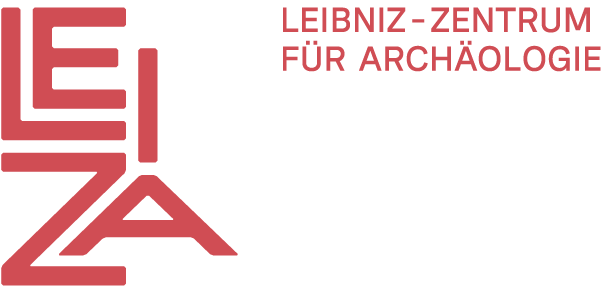
Verlag
Leibniz-Zentrum für Archäologie
Ludwig-Lindenschmit-Forum 1
D-55116 Mainz
Tel.: +49 6131 8885 0
E-mail: verlag@rgzm.de
Bisher erschienen
Armi votive in Sicilia: Atti del Convegno Internazionale di Studi Siracusa Palazzolo Acreide 12-13 Novembre 2021
Dieser Band versammelt die Beiträge der Konferenz »Armi votive in Sicilia«, die im November 2021 in Syrakus (Museo Archeologico Regionale Paolo Orsi) und im Palazzolo Acreide (Rathaus) stattfand.
Der vorliegende Band setzt das mit der Konferenz »Armi votive in Magna Grecia« (Salerno-Paestum 2017) begonnene Projekt fort, indem er eine ehrgeizige historisch-archäologische Analyse des Waffenangebots in einem diachronischen und interkulturellen Schlüssel verbindet und damit eine »zweite Tranche« darstellt.
Fünfzehn Beiträge, die einen Wendepunkt für die Kenntnis der Insel markieren, für ein besseres Verständnis der Variabilität und Komplexität dieser besonderen Votivpraxis, die die Rolle des Krieges in der Antike unterstreicht. Der Band enthält auch Überlegungen, die über die Insel hinausgehen und eine Synthese für das Studium eines komplexen Repertoires (Votivwaffen und Waffen im Votivkontext) darstellen und die Herausforderungen aufzeigen, denen sich die Forschung in nächster Zukunft stellen muss. In dieser Sammlung findet der Leser Beiträge, die den Diskurs über die Widmung von Waffen in Sizilien und im antiken Mittelmeerraum fortsetzen können.
Mare Thracium: Archaeology and History of Coastal Landscapes and Islands of the Thracian Sea during Antiquity and the Byzantine Era. International Workshop within the Framework of the DFG Project »The Thracian harbour city Ainos in Roman and Byzantine times – the development of a traffic hub in a changing environment«
Trotz seiner Randlage war das Mare Thracium ein integraler Bestandteil der Mittelmeerwelt. Der Reichtum seiner Ressourcen und die Flüsse, die es mit dem thrakischen Hinterland verbinden, waren von großer Bedeutung. Zahlreiche Hafenstädte förderten von der archaischen bis über die byzantinische Zeit hinaus die Entwicklung der Region.
Die Beiträge dieses Bandes sind aus einem Workshop hervorgegangen, der 2016 in Mainz im Rahmen des DFG-Schwerpunktprogramms 1630 »Häfen von der Römischen Kaiserzeit bis zum Mittelalter« stattfand. Sie befassen sich mit den natürlichen Bedingungen für die Seefahrt, den historischen Entwicklungen, den physischen Überresten von Küstensiedlungen und ihren Häfen sowie den Unterwasserfunden.
Glas als Fernhandelsprodukt im frühen Mittelalter – Köln und der europäische Norden: Zwei Workshops im Rahmen des DFG-Schwerpunktprogramms »Häfen von der Römischen Kaiserzeit bis zum Mittelalter«, ausgerichtet vom Römisch-Germanischen Museum zu Köln, 8.-10. November 2016 und dem Sydvestjyske Museer in Ribe / Dänemark, 20.-22. März 2018
Das durch die Deutsche Forschungsgemeinschaft geförderte, auf sechs Jahre (2012-2018) ausgelegte Schwerpunktprogramm (SPP) 1630 »Häfen von der Römischen Kaiserzeit bis zum Mittelalter« führte mit den Forschungen zu frühmittelalterlichen Glasfunden an Häfen zu einer interdisziplinären und vernetzten Zusammenarbeit zwischen mehreren Projektgruppen – Rhein, Nordsee, Ostsee und Binnenhäfen. In den innerhalb des Schwerpunktprogramms stattfindenden Austausch wurden zudem externe Institutionen und Personen, die sich der Forschung zu Herstellung und Distribution der Gläser im frühen Mittelalter widmen, ergänzend einbezogen. Bei der Zusammenarbeit wurden unterschiedliche Regionen miteinander verbunden: das fränkische Reich sowie die Gebiete der Friesen, Sachsen, Wikinger und Slawen.
Ohne das SPP wären derartig vernetzte und weitreichende Forschungen nicht möglich gewesen. Das Teilprojekt »Der frühmittelalterliche Hafen Kölns – Produktionsstätte und Exporthafen für Gläser« mit den dort erfassten Glaswerkstätten der Merowinger- und Karolingerzeit, die archäologisch und naturwissenschaftlich ausgewertet wurden, bildet in diesem Band den Ausgangspunkt für die Forschung zur frühmittelalterlichen Wirtschaftsgeschichte zum Thema Glas.
Die zwölf Beiträge gehen auf Vorträge zweier Tagungen zurück, die durch das Römisch-Germanische Museum der Stadt Köln (9.-10. November 2016) und die Sydvestjyske Museer in Ribe / Dänemark (20.-22. März 2018) ausgerichtet wurden.
Zwischen Machtzentren und Produktionsorten: Wirtschaftsaspekte von der römischen Epoche bis in das Hochmittelalter am Rhein und in seinen Nachbarregionen
Am 12. November 2018 wurde in Ingelheim am Rhein ein Kooperationsabkommen zwischen der dort ansässigen Forschungsstelle Kaiserpfalz und dem Römisch-Germanischen Zentralmuseum, Leibniz-Forschungsinstitut für Archäologie, unterzeichnet. Damit wurden jene engen Verbindungen schriftlich verstetigt, die schon seit der Mitte des 19. Jahrhunderts zwischen den Mainzer Wissenschaftlern und den Erforschern der Ingelheimer Kaiserpfalz bestanden hatten. Im Fokus der zukünftigen Kooperation stehen besonders europäische Wirtschaftsaspekte und Themen der überregionalen Materialforschung. Erste Früchte dieser Zusammenarbeit konnten bei interdisziplinär angelegten Tagungen am 12. und 13. November 2018 in Ingelheim sowie am 28. und 29. November 2019 in Mayen vorgestellt werden. Diese Veranstaltungen dienten zugleich dem intensiven Austausch mit Wissenschaftlern aus dem In- und Ausland. Die Resultate beider Tagungen sind in diesem Tagungsband zusammengeführt. In 25 Fachbeiträgen werden die Grundlagen des Handels im Rheinland und seinen Nachbarregionen sowie die Vorgänge des Warenaustausches zwischen Machtzentren, ländlichen Regionen und Produktionsstätten im Zeitraum von der römischen Epoche bis in das Hochmittelalter aus ganz unterschiedlichen Blickwinkeln beleuchtet. Sowohl für die großräumigen Entwicklungstendenzen und die Beziehungen zwischen unterschiedlichen Wirtschaftsregionen als auch für die Produktionsstätten und die Vermarktungsrouten bieten die Beiträge richtungsweisende Ausführungen, grundlegende Darstellungen und außergewöhnliche Beschreibungen. Sie bilden die Basis für zukünftige Forschungen in an das Rheinland anschließenden Teilen Europas, die im Rahmen der Kooperation geplant sind und in weiteren Tagungen ihren Niederschlag finden sollen.
Museen – Orte des Authentischen? Museums – Places of Authenticity?
Museen, aber auch Gedenk- und Kulturerbestätten sowie Archive und Bibliotheken sind die Hüter, Bewahrer und Auszeichnungsinstitutionen »authentischer Dinge« und in vielerlei Hinsicht zugleich »Orte des Authentischen«. Gerade vor dem Hintergrund der sich rasant entwickelnden digitalen Möglichkeiten sind sie damit wichtige Instanzen mit dem Anspruch, das »Echte« und das »Wahre« zu bewahren und zu vermitteln. Der Band gibt einen Einblick in die Breite der Diskussion zum Topos »Authentizität« in Museum und Kulturerbe.
Die Publikation geht auf eine Serie von internationalen Fachtagungen des Leibniz-Forschungsverbundes Historische Authentizität zurück, die am Römisch-Germanischen Zentralmuseum in Mainz sowie an der Universität Cambridge zwischen 2016 und 2019 stattfanden, und greift zudem die Diskussion vorangehender Veröffentlichungen des Forschungsverbundes auf.
56 Autorinnen und Autoren beschreiben aus unterschiedlichsten disziplinären Sichtweisen in 43 übergreifenden Beiträgen und anhand von ausgewählten Fallbeispielen verschiedenste Dimensionen der Auseinandersetzung mit dem Phänomen »Authentizität« in Sammlung, Forschung, Konservierung, Restaurierung, Ausstellung, Vermittlung und virtueller Darstellung. Die behandelten »Museumstypen« reichen dabei von Naturkundemuseen über Technik-, Kunst-, Universitäts-, Forschungsmuseen bis hin zu Personenmuseen. Sie gehen aber auch darüber hinaus, indem sie andere sammelnde Einrichtungen wie Bibliotheken und Archive einbeziehen.
From the Atlantic to Beyond the Bug River: Finding and Defining the Federmesser-Gruppen / Azilian
Eine Session mit dem Titel »From the Atlantic to beyond the Bug River– Finding and defining the Federmesser-Gruppen / Azilian on the North European Plain and adjacent areas« fand beim 17. Kongress der Union Internationale des Sciences Préhistoriques et Protohistoriques im September 2014 in Burgos im Namen der UISPP-Kommission »The Final Palaeolithic of Northern Eurasia« statt. Mit diesem Band legen wir einige der Beiträge zu dieser Session vor, die verschiedene Aspekte des Verhaltens von Jäger-Sammler-Gruppen in West- und Mitteleuropa während des mittleren Spätglazials untersuchen, um als Grundlage für den Vergleich der unterschiedlich definierten archäologischen Einheiten zu dienen. Wie eigenständig bzw. verbunden waren diese Gruppen in Zeit und Raum?
Human behavioural adaptations to interglacial lakeshore environments
Im Laufe der menschlichen Evolution ist uns die Anpassung an verschiedenste Klimabedingungen und Lebensräume immer wieder erfolgreich gelungen. Solche Anpassungen lassen sich insbesondere in warmzeitlichen Umwelten exzellent erforschen.
In der nordeuropäischen Tiefebene kommt es während der Warmzeiten häufig zu Flutungsereignissen von Senken, die zur Bildung von durch Binnenseen geprägten Landschaften führen. Diese Lebenswelten zeichnen sich durch eine außergewöhnlich hohe ökologische Diversität aus und bieten örtlich konzentrierte und vorhersagbare Ressourcen. Zahlreiche archäologische Fundstellen vom Paläolithikum bis ins Mesolithikum mit außergewöhnlichem Datenpotential sind in diesen Binnensee-Landschaften bewahrt.
Viele dieser archäologischen Fundstätten sind als Orte bekannt, an denen Menschen Tiere jagten und schlachteten, Rohmaterial zur Geräteherstellung zusammentrugen, Steinartefakte herstellten und sich dem Sammeln pflanzlicher und aquatischer Ressourcen widmeten. Diese Fundstätten sind in Ablagerungen von Feuchtgebieten eingebettet, deren vorteilhafte Bedingungen die Überlieferung von organischen und botanischen Überresten begünstigen. Damit stellen sie ein außergewöhnliches Archiv für eine detaillierte Analyse der menschlichen Anpassungsfähigkeit in sich verändernden, dynamischen Umwelten bereit.
In diachroner Perspektive vom Mittleren Pleistozän bis hin zum Holozän, stellt die vorliegende Anthologie verschiedene Aspekte warmzeitlicher Fundstätten in Seenlandschaften zur Illustration menschlicher Überlebensstrategien unter ähnlichen Umweltbedingungen zusammen.
Dieser Band trägt zum Kernforschungsthema “Menschliche Verhaltensstrategien in warmzeitlichen Umwelten” des Archäologischen Forschungszentrums und Museums für menschliche Verhaltensevolution MONREPOS (RGZM) (Neuwied, D) bei. Ziel dieser Forschung ist eine ganzheitliche und diachrone Analyse menschlicher Überlebensstrategien in ähnlichen Umweltbedingungen, um die Entwicklung menschlichen Verhaltens zur Existenzsicherung zu dokumentieren und um einzuschätzen, ob bestimmte Verhaltensänderungen als direkte Reaktion auf unterscheidbare Umweltbedingungen zurückzuführen sind.
The Origins of Bone Tool Technologies: "Retouching the Palaeolithic: Becoming Human and the Origins of Bone Tool Technology" Conference at Schloss Herrenhausen in Hannover, Germany, 21.- 23. October 2015
Dieser Band versammelt die Beiträge der Konferenz “Retouching the Palaeolithic: Becoming Human and the Origins of Bone Tool Technology”, die im Oktober 2015 im Schloss Herrenhausen in Hannover veranstaltet wurde. Mit großzügiger Unterstützung der VolkswagenStiftung (Förderangebot Symposien und Sommerschulen) brachte die Konferenz eine internationale Gruppe von Wissenschaftlerinnen und Wissenschaftlern eines breiten Forschungsbereichs zusammen, um die Entstehung und Entwicklung von Knochengerättechnologien in der Vorgeschichte zu erforschen, vor allem Retuscheure, Druck- und Schlaggeräte, die in verschiedenen lithischen Abschlagaktivitäten genutzt wurden. Das breite Teilnehmerspektrum lieferte eine Reihe von Blickwinkeln auf Knochengerätnutzung von Westeuropa bis zur Levante, vom Altpaläolithikum bis ins Neolithikum. Zusammen liefern diese Beiträge einen Überblick, wie die Einbindung von Knochengeräten mit anderen paläolithischen Technologien die menschliche Subsistenz und andere sozioökonomische Verhaltensweisen über Zeit und Raum beeinflusste. Schließlich behandelt dieser Band nicht nur Knochengeräte; vielmehr beabsichtigt die Aufsatzsammlung, weitergehende Ideen zu Technologie und Innovation anzuregen, da die Fähigkeit und der Wunsch, neue Geräte zu entwickeln, wahrhaftig im Kern dessen liegt, was uns zum Menschen macht.
Urbanitas – urbane Qualitäten: Die antike Stadt als kulturelle Selbstverwirklichung
Die schier unüberschaubare Anzahl antiker Städte lässt keinen Zweifel daran, wo im klassischen Altertum das Leben pulsierte. Worin genau die große Anziehungskraft der Städte bestand, lässt sich allerdings nur anhand seltener Äußerungen in den Schriftquellen erahnen: Abgesehen von den vielfältigen Unterhaltungsangeboten, mit denen die Städte aufwarten konnten, ist dort stets von Verfeinerungen die Rede, sei es im gesellschaftlichen Miteinander oder in der Gestaltung der materiellen Welt. Aber wie lassen sich solche Facetten urbaner Kultur auch archäologisch nachweisen? Der Tagungsband wendet sich der Frage antiker urbanitas exemplarisch von verschiedenen Seiten zu: Zum einen gilt das Augenmerk all denjenigen architektonisch greifbaren Installationen, die ein kultiviertes Leben jenseits ökonomischer Kriterien der Nützlichkeit erkennen lassen. Zum anderen wird beleuchtet, mit welchen Mitteln sich die Städte ein eigenes Selbstbewusstsein verschafft haben, das von Stolz, Prestigedrang und nachhaltigem Wir-Gefühl zeugt. Schließlich geht es aber auch ganz einfach um die Frage: Was macht die Stadt in den Augen der antiken Menschen zur Stadt? Welche urbanen Qualitäten mussten erfüllt sein, damit ein Gemeinwesen den Anspruch erheben konnte, sich auf Augenhöhe mit anderen Städten zu befinden? Die hier gesammelten Beiträge, die nicht nur die großen Zentren, sondern auch Städte verschiedenster Größenordnungen bis an die Peripherie der Mittelmeerwelt im Zeitraum vom 7. Jahrhundert v. Chr. bis in die Spätantike in den Blick nehmen, geben unterschiedliche Antworten darauf: Es gibt durchaus wiedererkennbare Muster und verbindliche Normvorstellungen, aber nicht minder eigenwillige Lösungen und Sonderwege, dank derer die Städte ein eigenes Image entwickeln konnten.
Authentisierung im Museum: Ein Werkstatt-Bericht
Museen sind Orte des »Originals« und »authentischer« Objekte. Aber was ist mit dem schillernden Begriff des Authentischen im musealen Bereich überhaupt gemeint? Können Kopien, wenn schon keine Originale, so doch authentische Objekte sein? Ist Authentizität eine Eigenschaft der Dinge oder eine Zuschreibung durch Museumsmacher? Und welche Rolle spielen Authentizität und Aura für die Besucher und Nutzer unterschiedlicher Museen?
Der vorliegende Band schlägt einen neuen Weg bei der Beantwortung dieser Fragen ein: Er untersucht Praktiken des Authentisierens im Museum. Thematisiert wird, wie Sammlungslogiken und Auswahlprozesse, wissenschaftliche Forschung, restauratorische und konservierende Praktiken sowie Ausstellungspräsentationen und Vermittlungsperspektiven Dinge authentisieren, auratisieren und sakralisieren. Oder aber umgekehrt ehemalige Gewissheiten infrage stellen und das zunächst als authentisch Angesehene dekonstruieren. Insofern schaffen Museen nicht nur historische Authentizität, sondern sie zerstören sie auch, indem alte Zusammenhänge verändert und neue kreiert werden – etwa wenn Gebrauchs- oder Fundzusammenhänge in eine Ausstellung überführt oder modifiziert werden.
Der Band gibt Einblicke in archäologische, kultur- und zeithistorische, technik- und naturkundliche Museen und ihren Umgang mit dem Authentischen. Er geht auf aktuelle Forschungen des Leibniz-Forschungsverbunds Historische Authentizität und seiner beteiligten Institutionen zurück und will zugleich dafür sensibel machen, in der kuratorialen Praxis die Chancen und Hürden beim Operieren mit dem Authentizitätsbegriff stärker wahrzunehmen.



